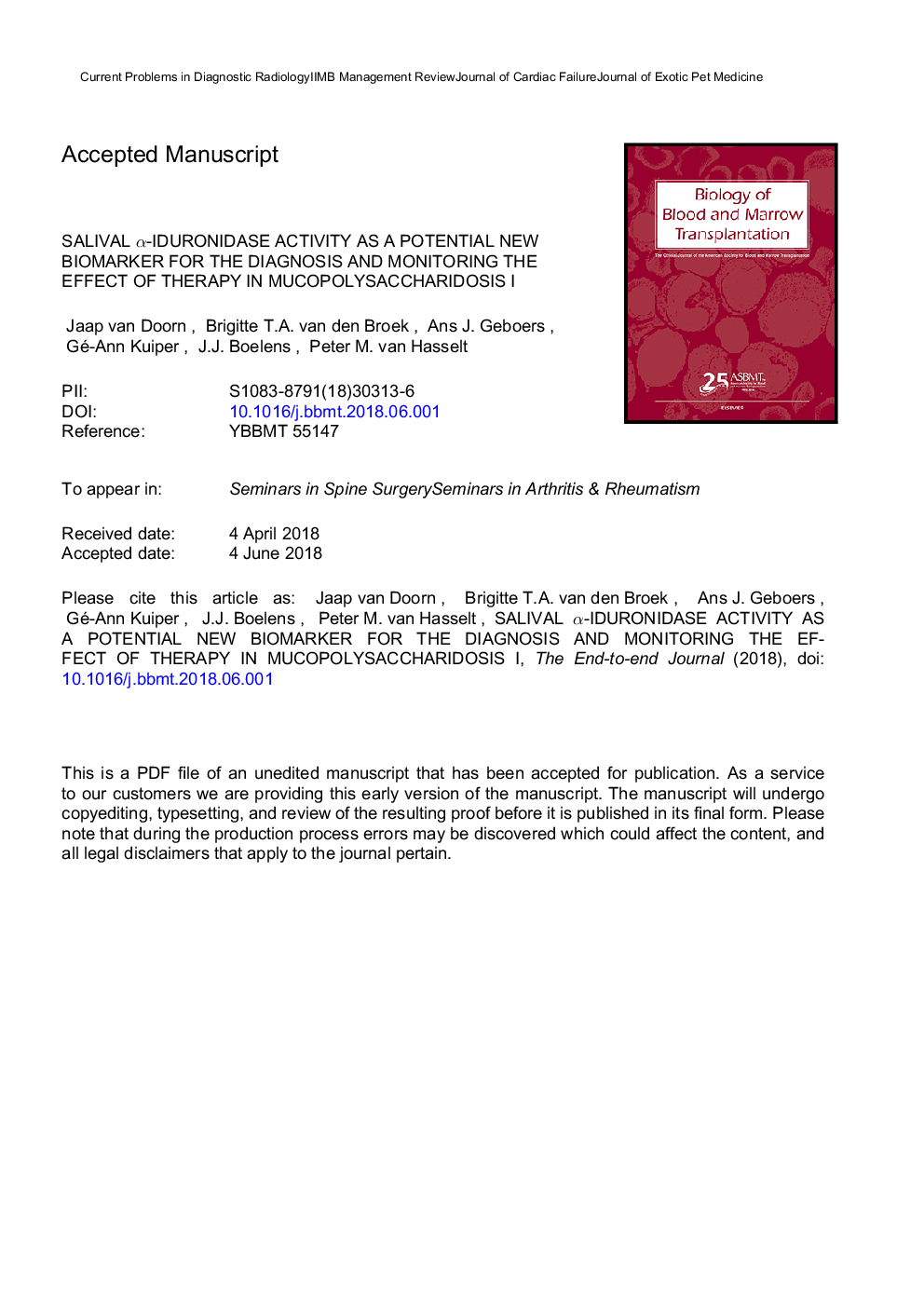| Article ID | Journal | Published Year | Pages | File Type |
|---|---|---|---|---|
| 10157450 | Biology of Blood and Marrow Transplantation | 2018 | 16 Pages |
Abstract
Although disease progression in mucopolysaccharidosis type I (MPS-I) can be attenuated by hematopoietic cell transplantation (HCT), it is increasingly recognized that residual disease is substantial. Biomarkers that would allow us to evaluate the efficacy of HCT (and upcoming new therapies) in nonhematologic tissues are needed. Current biomarkers, including the iduronidase (IDUA) activity in leukocytes, are not suitable for this purpose because they are assessed in tissues of hematologic origin and may not reflect enzyme availability in nonhematologic tissues. Saliva is a nonhematologic body fluid that can be collected easily and noninvasively. We hypothesized that the extent of recovery of IDUA activity in saliva after HCT could provide a better understanding of the penetration of donor-derived enzyme into nonhematologic compartments. This study in 20 patients with MPS-I shows that the measurement of IDUA activity in saliva is possible and allows diagnosis of IDUA deficiency (P < .0001), with values a magnitude further deviating from the normal range than when assayed in corresponding dried blood spots (DBSs). Furthermore, it could possibly differentiate between phenotypes (P = .045). More importantly, patients exhibit strikingly low values of IDUA in saliva after HCT, far below the normal range of control subjects (P = .013), contrasting the normal IDUA levels in DBSs. We postulate that the limited recovery of donor-derived IDUA activity in saliva after treatment reflects the situation in poorly responding nonhematologic tissue compartments, unveiling enzyme delivery as a weak spot of the current therapy. Salivary IDUA activity could be used as a biomarker for the evaluation of the effect of new therapies in well-vascularized nonhematologic tissues.
Related Topics
Life Sciences
Biochemistry, Genetics and Molecular Biology
Cancer Research
Authors
Jaap van Doorn, Brigitte T.A. van den Broek, Ans J. Geboers, Gé-Ann Kuiper, Jaap J. Boelens, Peter M. van Hasselt,
